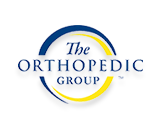Sports medicine physicians work with athletes and sports teams at all levels to help heal the athletic injuries that can result from all levels of sporting activity. Sports medicine physicians specialize in both surgical and non-surgical procedures. In order to become sports medicine physicians, medical doctors are required to complete fellowship programs in this specific sub-field.
Sports medicine physicians have primary specialization in either orthopedic surgery or primary care with a subspecialty in sports medicine. During their clinical rotations, medical students can take electives in one of these specialty areas. Following the completion of medical school, graduates enter into residency programs. After completing a residency, a physician can apply for a sports medicine fellowship program, which is typically at least one year in length.
Orthopedic surgeon Fellows in sports medicine receive focused training on surgical techniques relating to sports injuries, such as knee and shoulder reconstruction. Many orthopedic sports medicine fellowships include research opportunities coupled with extensive clinical care experience.
Sports Medicine and Rehabilitation physicians are medical doctors who have completed training in the medical specialty of physical medicine and rehabilitation (PM&R). Specifically, rehabilitation physicians:
- Diagnose and treat pain
- Restore maximum function lost through injury, illness or disabling conditions
- Treat the whole person, not just the problem area
- Lead a team of medical professionals
- Provide non-surgical treatments
- Explain medical problems and treatment/prevention plans
The primary focus of a rehabilitation physician is to treat any disability resulting from disease or injury, ranging from sore shoulders to spinal cord injuries. The emphasis is on the development of a comprehensive program for putting the pieces of a person’s life back together after injury or disease – without surgery.
Rehabilitation physicians take the time needed to accurately pinpoint the source of an ailment. They then design a treatment plan that can be carried out by the patients themselves or with the help of the rehabilitation physician’s medical team. This medical team might include other physicians and health professionals, such as neurologists, orthopedic surgeons, and physical therapists. By providing an appropriate treatment plan, rehabilitation physicians help patients stay as active as possible at any age. Their broad medical expertise allows them to treat disabling conditions throughout a person’s lifetime.
